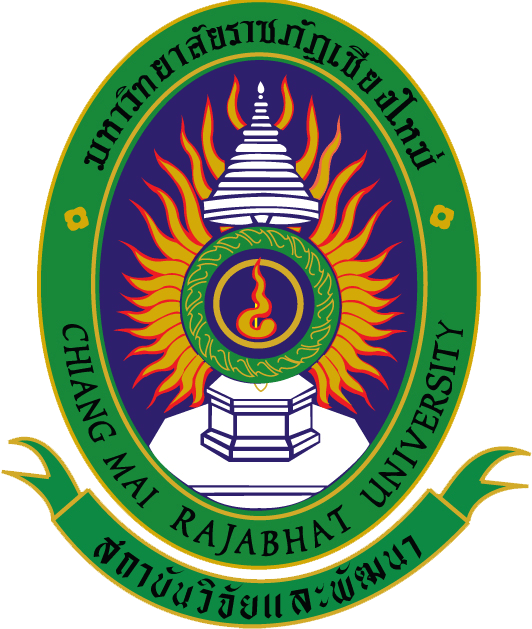
ระบบสารสนเทศงานวิจัย สถาบันวิจัยและพัฒนา มหาวิทยาลัยราชภัฏเชียงใหม่
Research Information System(RIS)
ความหลากหลายทางชีวภาพและความสัมพันธ์กับภูมิปัญญา ท้องถิ่นเพื่อการอนุรักษ์และจัดการสิ่งแวดล้อมทางน้ำ ในพื้นที่ต้นน้ำ แม่แจ่ม อำเภอกัลยาณิวัฒนา จังหวัดเชียงใหม่
อาจารย์อติณัฐ จรดล
คณะวิทยาศาสตร์และเทคโนโลยี
คำสำคัญ :
เลขทะเบียน :
359-57-SCI-NRCT
บทคัดย่อ
การศึกษาการติดตามตรวจความหลากหลายทางชีวภาพ และการใช้เป็นดัชนีสอบคุณภาพน้ำโดยใช้สิ่งมีชีวิตประกอบไปด้วย และแมลงน้ำ ร่วมกับปัจจัยทางกายภาพและเคมีอย่างง่ายในพื้นที่ลุ่มน้ำแม่แจ่ม อำเภอกัลยานิวัฒนา จังหวัดแม่ฮ่องสอน จากการศึกษาความหลากหลายของแมลงน้ำและการประยุกต์ใช้เป็นดัชนีบ่งชี้คุณภาพน้ำของแม่น้ำแม่แจ่มในพื้นที่ต้นน้ำแม่น้ำแม่แจ่ม อำเภอกัลยาณิวัฒนา จังหวัดเชียงใหม่ จำนวน 4 จุดเก็บตัวอย่าง คือ จุดเก็บตัวอย่างที่ 1 MJ1 บริเวณบ้านหนองแดง จุดเก็บตัวอย่างที่ 2 MJHK บริเวณบ้านห้วยครก จุดเก็บตัวอย่างที่ 3 MJ2 บริเวณบ้านจันทร์ และจุดเก็บตัวอย่างที่ 4 บริเวณบ้านแจ่มหลวงทุกจุดเก็บตัวอย่างที่อยู่ในอำเภอกัลยาณิวัฒนา จังหวัดเชียงใหม่ ทำการศึกษาในช่วงเดือนธันวาคม พ.ศ.2557 (ฤดูหนาว) เดือนพฤษภาคม พ.ศ.2558 (ฤดูร้อน) และเดือนสิงหาคม พ.ศ.2558 (ฤดูฝน) โดยใช้วิธีการเก็บตัวอย่างแมลงน้ำแบบ sweep sampling พบแมลงน้ำทั้งหมด 9 วงศ์ 84 อันดับ จำนวน 8,889 ตัว ค่าดัชนีความหลากหลายและค่าความสม่ำเสมอที่สูงที่สุดในจุดเก็บตัวอย่าง MJHK เดือนสิงหาคม พ.ศ.2558 (ฤดูฝน) คือ 2.505 และ 0.4535 ตามลำดับ ส่วนค่าที่ต่ำที่สุดอยู่ในจุดเก็บตัวอย่าง MJ1 เดือนพฤษภาคม พ.ศ.2558 (ฤดูร้อน) คือ 0.6079 และ 0.09666 ตามลำดับ ค่าชนิดเด่นของแมลงน้ำที่พบสูงสุด คือ 0.7462 บริเวณจุดเก็บตัวอย่าง MJ1 เดือนพฤษภาคม พ.ศ.2558 (ฤดูร้อน) และค่าชนิดเด่นของแมลงน้ำที่พบต่ำสุด คือ 0.1188 ในจุดเก็บตัวอย่าง MJ1 เดือนพฤษภาคม พ.ศ.2558 (ฤดูร้อน) การใช้แมลงน้ำเป็นดัชนีบ่งชี้คุณภาพน้ำ โดยใช้คะแนน BMWP Score คำนวณหาค่า ASPT Score พบว่าคุณภาพน้ำอยู่ในเกณฑ์คุณภาพน้ำปานกลาง สารอาหารปานกลาง จากการประเมินคุณภาพน้ำด้วยวิธี AARL-PC Score พบว่าคุณภาพน้ำอยู่ในเกณฑ์น้ำดีถึงปานกลาง สารอาหารน้อยถึงปานกลางเป็นส่วนใหญ่ ยกเว้นจุดเก็บตัวอย่าง MJ1 เดือนสิงหาคม, MJ2 เดือนพฤษภาคม และสิงหาคม, MJ3 เดือนพฤษภาคม และ MJHK เดือนพฤษภาคม คุณภาพน้ำอยู่ในเกณฑ์ปานกลาง สารอาหารปานกลาง โดยแมลงน้ำที่พบมีความสัมพันธ์กับลักษณะพื้นท้องน้ำที่แตกต่างกันไปตามแต่ละฤดูกาลที่เปลี่ยนแปลงไป การใช้ แมลงน้ำ เป็นดัชนีบ่งชี้ความอุดมสมบูรณ์และคุณภาพน้ำของแม่น้ำแม่แจ่ม พบว่ามีความหลากหลายในระดับปานกลางค่อนข้างน้อยเมื่อเทียบกับแหล่งน้ำอื่นในพื้นที่ภาคเหนือ ส่วนการศึกษาองค์ความรู้และภูมิปัญญาท้องถิ่นผ่านการจัดการระบบเหมืองฝาย และพิธีกรรมอนุรักษ์ต้นน้ำ ส่งเสริมให้ชุมชนสามารถติดตามตรวจสอบคุณภาพน้ำด้วยตัวเองได้ต่อไป
Abstract
The Study on Bio-monitoring and Water Resources in Mae Hong Son Province were select the Mae Sa Ngee Watershed, The using of aquatic organismsฟห aquatic insects and some physico-chemical technique were studied and carried out from September 2008 to March 2010. Seven sampling sites along the Mae Sa Ngee River were chosen including MJ1 the origin of Mae Sa Ngee Stream, MJHK Mae Sa Ngee community, MJ2 Ban Lim Bridge in Mae La Noi District and Mae Sa Ngee River after Thum Pla Cave, Mae Hong Son Province. The water quality investigation by using ASPT, AARL-PP and AARL-PC Score revealed that the water quality in upper stream (MJ1) was classified to moderate to clean and downstream (MJ2 to MJ3) was classified to moderate water quality. The overall water quality in Mae Sa Ngee was moderate when compared with the standard water quality of Thailand. The water can use for household consumption by common treat and agricultural. This project is including the knowledge transferred to the local people such as student and local citizens. Two workshops were issued in each focused area for communities/school including student, teacher and people in the research areas along the Mae Sa Ngee Stream. After Participatory collection, Fifteen species macroalgae and Thirty two Aquatic insect were found as the bioindicator. The diversity of aquatics organism shown that the Mae Sa Ngee Stream is classified into the moderate to low abundance compared to the other rivers in northern Thailand. The local communities were continuing the local wisdom on the check-dam management and continuing the upstream respecting. The participants were studied for collecting aquatics samples, monitored and evaluated the water quality by themselves. The data from local researcher were transferred to the university researcher for analyzed and evaluated the water quality in the Mae Sa Ngee River. The result by the local researcher shown that the water quality in Mae Sa Ngee River were clean to moderate, and moderate by using the physical, chemical and some biological simple technique. The result from local researcher and the collecting sample by Chiang Mai Rajabhat University staff found that the macroalgae and aquatic insects could be used for water quality indicator and monitor in the Mae Sa Ngee River.
ไฟล์งานวิจัย
อยู่ในระหว่างการปรับปรุงเนื้อหา394 23 ส.ค. 2561
สำนักงานคณะกรรมการวิจัยแห่งชาติ (วช.)
196 Paholyotin Rd., Chatuchak, Bangkok 10900
0-2561-2445